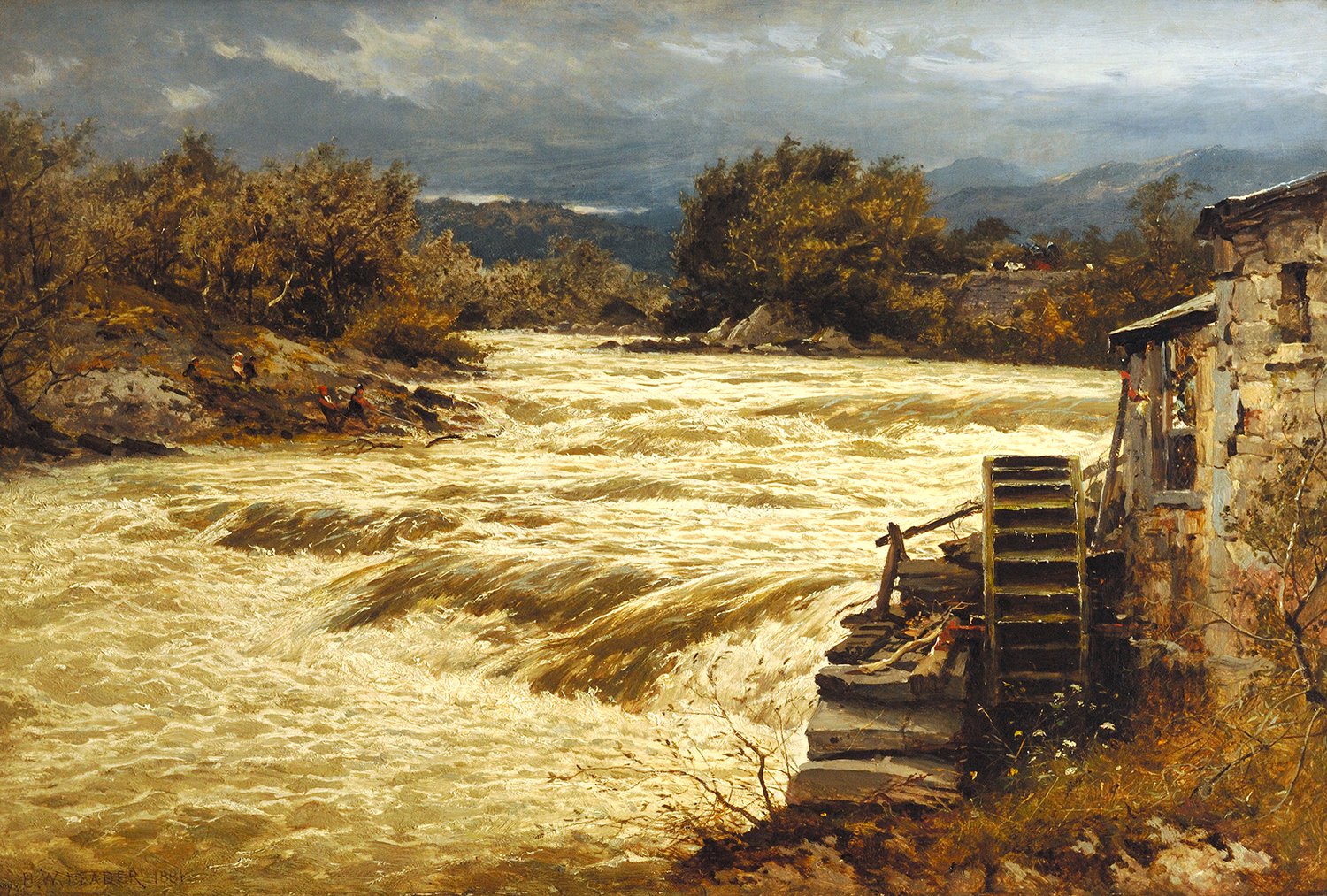7. Llugwy in Flood, by Benjamin Williams Leader
 Benjamin Williams Leader, Llugwy in Flood, 1881, oil on canvas, 50.8 x 76.2 cm
Benjamin Williams Leader, Llugwy in Flood, 1881, oil on canvas, 50.8 x 76.2 cm
As the weather outside (at least in Oxford) got considerably less placid, let us look at a different kind of landscape. Benjamin Williams Leader (1831-1923), RA, came from a dissenting family in Worcester, the eldest of the eleven children of a civil engineer, who was an amateur artist and a friend of Constable. He was born Benjamin Williams, but added his father’s second name to his surname to distinguish himself from other artists called ‘Williams’ – no doubt a prudent precaution. He went on to become one of the more important Victorian landscape artists, and his works were exhibited at each Royal Academy summer exhibition from 1854 to 1922, an incredibly long run. Rivers and watery landscapes were his particular specialism – his best known picture is perhaps the February Fill Dyke at the Birmingham Art Gallery, a charming rural landscape of a dyke filled with melting snow towards the end of the winter.
He found his subjects in Worcestershire itself, in the Severn Valley, occasionally in Scotland, but (to quote the inventory note from the former Keeper of the Pictures, Professor Peter Hacker, who should get much of the credit for the present shape of our collection) ‘especially fond of the area around Bettwis-y-Coed’ in Snowdonia, shown also on this picture, done at his characteristic intersection of naturalistic and romantic. He catches the river at a particularly dramatic moment (compare a more tranquil view of the Llugwy at the Tate), enhancing what is already a dramatic spot – a sharp curve in the river, beginnings of the mountains in the background. This might be an interesting testimony to the influence of climate: apparently, the winter of 1881 was characterised by particularly heavy snowfall in much of the northern hemisphere, which led to flooding elsewhere too, notably to the Great Flood on the Missouri.
What catches my eye, though, is the scenes of human life struggling on despite the rage of the nature, which flank the picture: a battered mill to the right, two men trying to recapture something from the river on the left, with three women watching at a greater distance from the river-bank. The figures are small, and only a part of the building is shown, but they provide an extremely effective framing to the nature scene in the middle. Perhaps as we are struggling on in the days of the pandemic, this can be an inspiring image for us, too.
View the painting on Art UK here.
 Dr Georgy Kantor, Tutorial Fellow in Ancient History and Keeper of the Pictures
Dr Georgy Kantor, Tutorial Fellow in Ancient History and Keeper of the Pictures